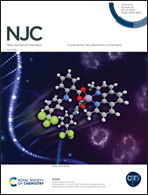Homogenizing of Pt on NiCu films for enhanced HER activity by two-step magneto-electrodeposition†
Abstract
The efficient production of hydrogen through water electrolysis requires stable, high-performance and rather cost-effective electrocatalysts to promote the hydrogen evolution reaction (HER). Platinum (Pt) is known to be a benchmark electrocatalyst for the HER, but its high-cost is a major obstacle for large-scale applications. Therefore, reducing Pt loading on electrodes, with a minimal influence on the electrochemical performance is of significant importance. Here, we report on the effective utilization of Pt through a simple two-step magneto-electrodeposition synthesis method, leading to the formation of uniformly dispersed Pt/NiCu electrocatalysts with an excellent catalytic activity. Under optimum conditions, NiCu substrates are fabricated under a vertical static magnetic field of 0.5 T, followed by pulsed electrodeposition of Pt under the same magnetic field. The electrocatalyst (0.5 T NiCu + 0.5 T Pt) exhibits a high stability and superior HER activity, characterized by low overpotentials of 10.6, 54.6, and 87.8 mV obtained at current densities of 10, 100, and 200 mA cm−2, respectively, accompanied by a small Tafel slope of 13.4 mV dec−1 in alkaline media (1 M KOH). This work provides a new approach enabling the optimum utilization of Pt-based electrocatalysts employed for the HER.

- This article is part of the themed collection: New Journal of Chemistry HOT Articles


 Please wait while we load your content...
Please wait while we load your content...